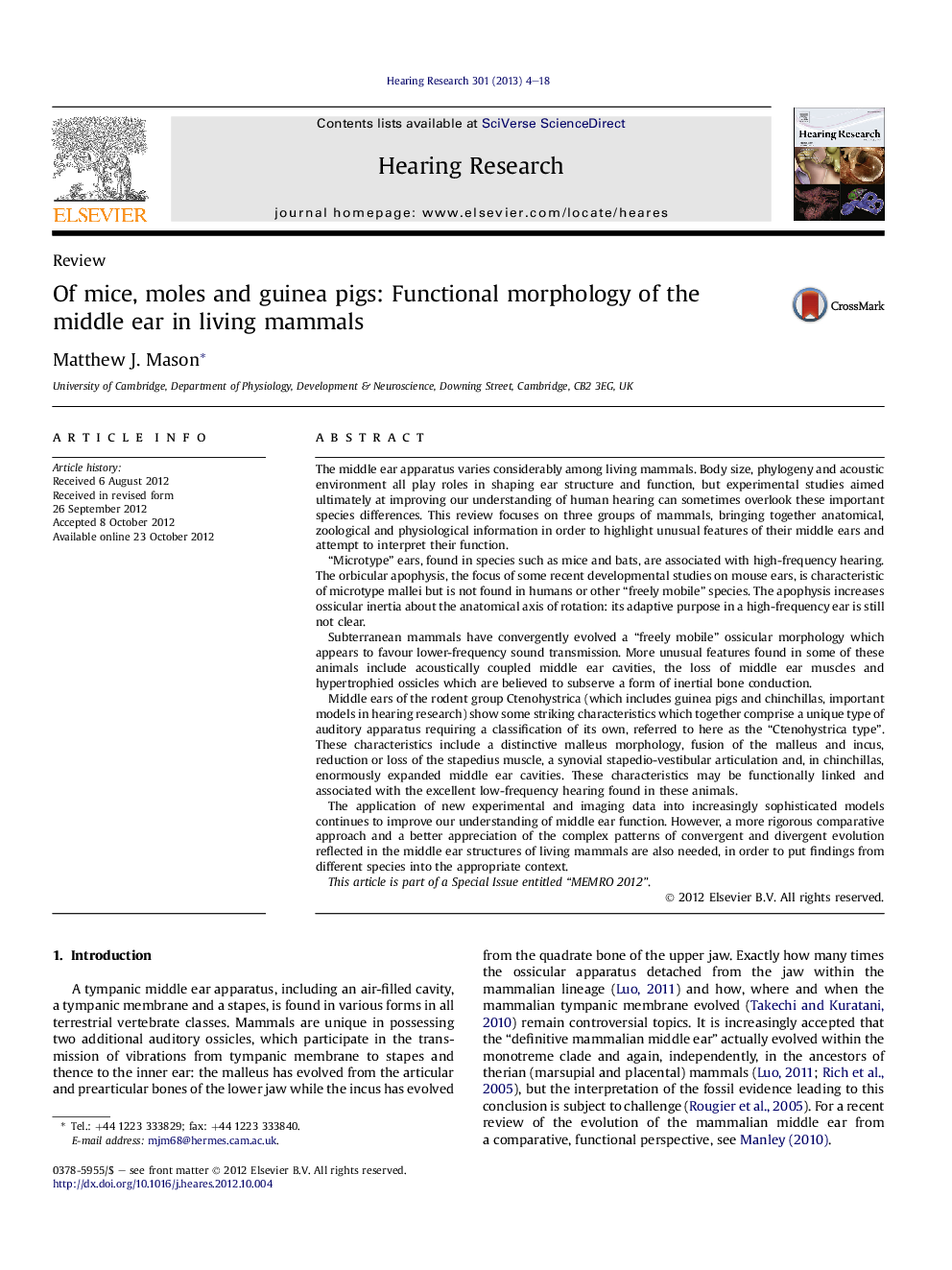| کد مقاله | کد نشریه | سال انتشار | مقاله انگلیسی | نسخه تمام متن |
|---|---|---|---|---|
| 4355199 | 1615599 | 2013 | 15 صفحه PDF | دانلود رایگان |

The middle ear apparatus varies considerably among living mammals. Body size, phylogeny and acoustic environment all play roles in shaping ear structure and function, but experimental studies aimed ultimately at improving our understanding of human hearing can sometimes overlook these important species differences. This review focuses on three groups of mammals, bringing together anatomical, zoological and physiological information in order to highlight unusual features of their middle ears and attempt to interpret their function.“Microtype” ears, found in species such as mice and bats, are associated with high-frequency hearing. The orbicular apophysis, the focus of some recent developmental studies on mouse ears, is characteristic of microtype mallei but is not found in humans or other “freely mobile” species. The apophysis increases ossicular inertia about the anatomical axis of rotation: its adaptive purpose in a high-frequency ear is still not clear.Subterranean mammals have convergently evolved a “freely mobile” ossicular morphology which appears to favour lower-frequency sound transmission. More unusual features found in some of these animals include acoustically coupled middle ear cavities, the loss of middle ear muscles and hypertrophied ossicles which are believed to subserve a form of inertial bone conduction.Middle ears of the rodent group Ctenohystrica (which includes guinea pigs and chinchillas, important models in hearing research) show some striking characteristics which together comprise a unique type of auditory apparatus requiring a classification of its own, referred to here as the “Ctenohystrica type”. These characteristics include a distinctive malleus morphology, fusion of the malleus and incus, reduction or loss of the stapedius muscle, a synovial stapedio-vestibular articulation and, in chinchillas, enormously expanded middle ear cavities. These characteristics may be functionally linked and associated with the excellent low-frequency hearing found in these animals.The application of new experimental and imaging data into increasingly sophisticated models continues to improve our understanding of middle ear function. However, a more rigorous comparative approach and a better appreciation of the complex patterns of convergent and divergent evolution reflected in the middle ear structures of living mammals are also needed, in order to put findings from different species into the appropriate context.This article is part of a Special Issue entitled “MEMRO 2012”.
► Microtype ears are small but a prominent orbicular apophysis increases the mass and rotatory inertia of the malleus.
► The orbicular apophysis has been misidentified as the “processus brevis” in mouse developmental studies.
► Some golden moles have enormous mallei which increase seismic sensitivity through inertial bone conduction.
► The “Ctenohystrica type” middle ear, found in guinea pigs and chinchillas, comprises a number of unusual features.
► Several groups of mammals have lost either the tensor tympani or the stapedius muscle.
Journal: Hearing Research - Volume 301, July 2013, Pages 4–18